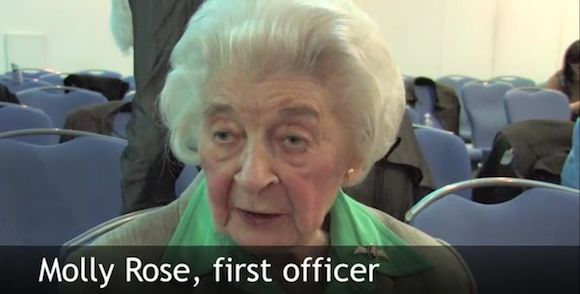We Will Never Be As Awesome as These Women Pilots of WWII
Sock It To 'Em Ada

Meet Molly Rose, an octogenarian and one of the last surviving women of the RAF Air Transport Auxilliary, an organization of about one thousand pilots whose job was to move airplanes to where they needed to be. After all, the planes themselves had to get to places where they could be flown into combat.
Ms. Rose was featured in last year’s BBC documentary Spitfire Women, which chronicled the integration of women into the ATA. At the beginning of the war the Auxilliary stood as a completely male flying force, until Pauline Gower, a woman with over two thousand hours of flying experience in 1939 alone, whipped up support for the allowance of women into the ranks.
It helped that Gower’s father was a member of parliament, and once the resistance was overcome, she became head of the women’s section of the ATA.
The ATA made tough demands because unlike RAF pilots, who flew only one type of aircraft, ATA personnel would fly several different types – among them Tiger Moths, Messengers, Dakotas, Oxfords, Wellingtons, and, of course Spitfires – sometimes in the space of one day.
The planes all had different cockpit layouts and controls, and the women had only a manual for basic flying information, and they often flew in extremely challenging weather. But they took it in their stride, as Molly Rose, who had gone straight from her finishing school in Paris to working as an engineer in her father’s aircraft factory, drily attested.
10% of ATA pilots died over the course of the war. The video below is of Molly Rose speaking about the Spitfire, one of the quintessential fighter planes of England’s defenses in World War II. The “the backbone of RAF Fighter Command” in Europe, the Mediterranean, and the Pacific front. In her own words: “It was a woman’s airoplane.”
(via The Arts Desk and Flight Blog.)
Have a tip we should know? tips@themarysue.com